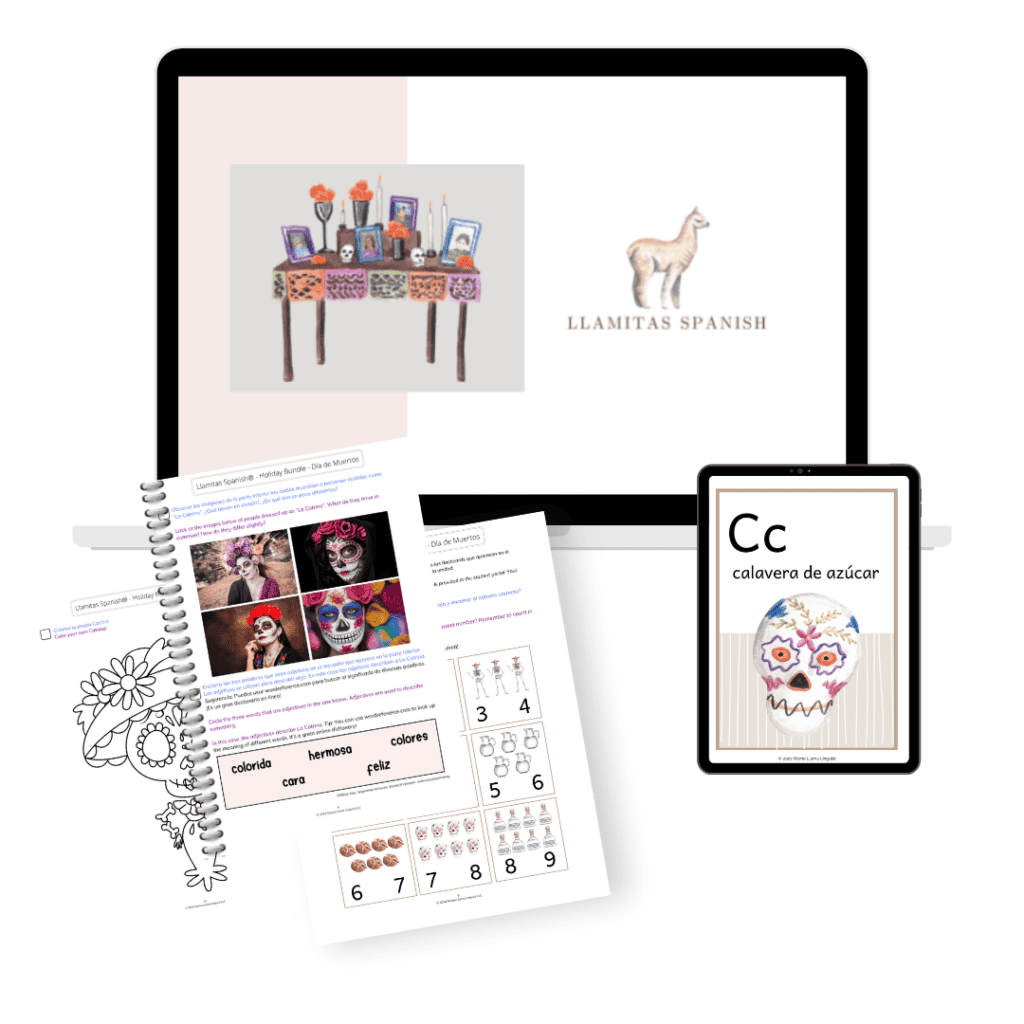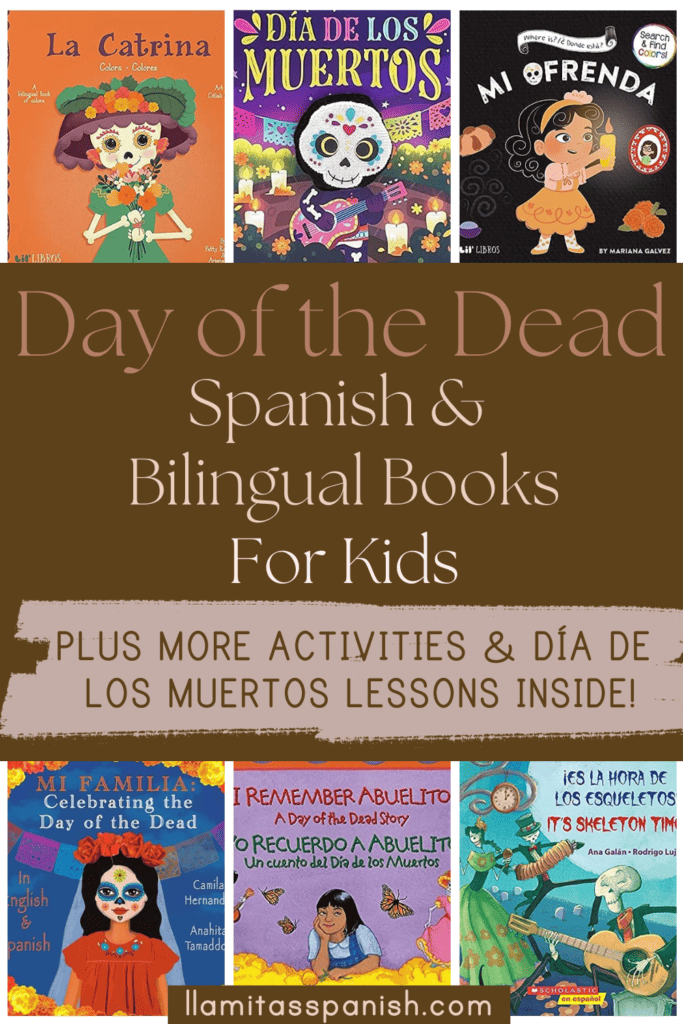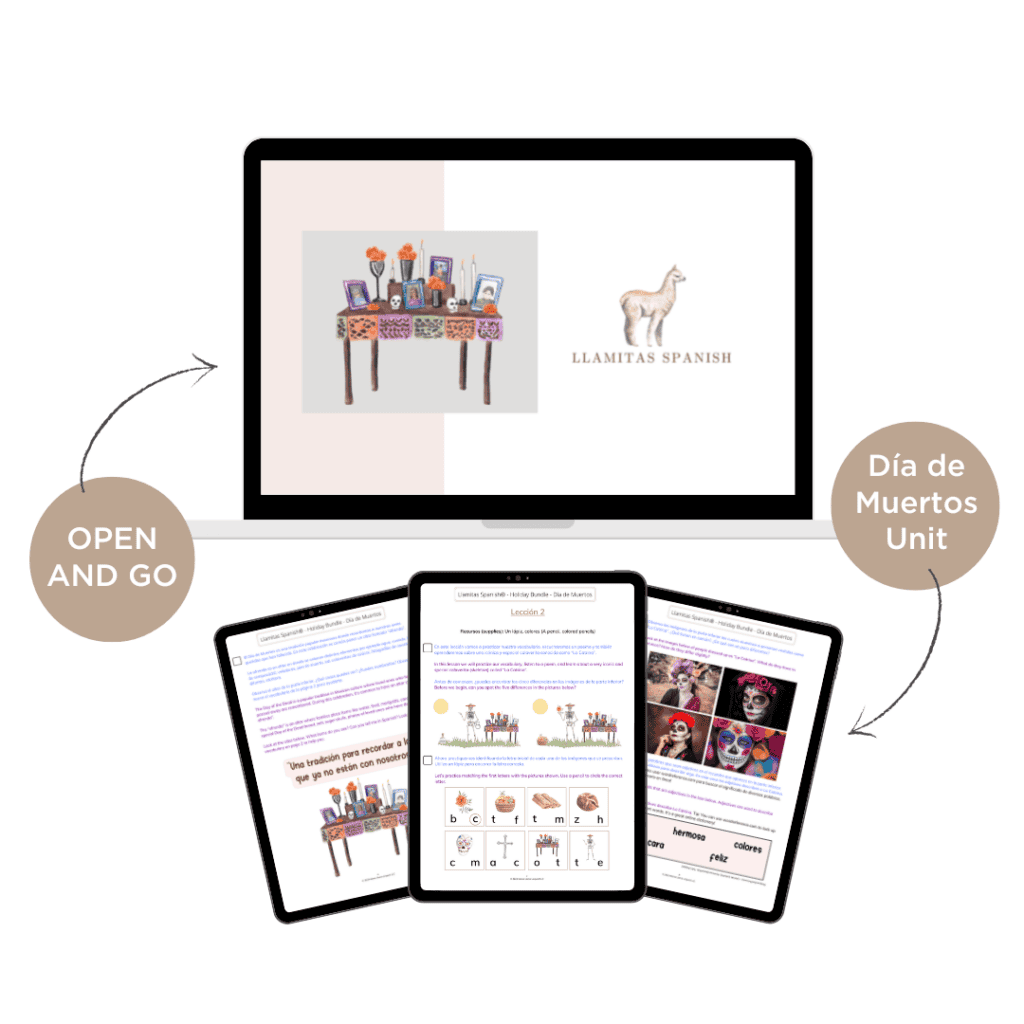In this post: We take a closer look at this Latin American holiday, how it’s celebrated and the many ways you can teach your kids about it with our Día de Muertos unit!

This post contains affiliate links.
Table of Contents
What is El Día de los Muertos?
El Día de Los Muertos (The Day of the Dead) is a Mexican holiday that takes place every year on November 2 though various festivities begin as early as October 31.
While it may appear scary to onlookers, it’s quite the opposite and is a celebration to show honor and respect for loved ones who have passed. It is believed that the souls of the deceased relatives return on those days to briefly reunite with the living.
This tradition dates back to over 3000 years and is said to have originated among Indigenous cultures including the Aztecs and Nahua people who saw death as an ever-present part of life.
The rituals they conducted to honor the dead were passed down to many generations and are still practiced today.
Though the Day of the Dead is recognized in other cultures and countries around the world, the unique traditions practiced by the Mexicans are what set their celebrations apart.

Traditions for el Día de los Muertos
Here are some of the main traditions you can see portrayed for el Día de los Muertos:
- Calaveras (Skulls)
Skulls have become synonymous with this holiday and can be found everywhere in various forms including sugar candy called alfeñiques, clay decorations and face paintings.
The skulls are usually made or drawn with a smile to represent laughter in the face of death.
- La Calavera Catrina (Elegant Skull)
In the 20th century, cartoonist Jose Guadalupe Posada originally portrayed a female skeleton with makeup and beautiful clothes called La Calavera Catrina (Elegant Skull) to highlight Mexicans’ preference for European culture over their own.
It was a reminder that we’re all the same and all have similar skeletons. This has been a major figure in the Day of the Death celebrations ever since.
- Ofrenda (Offering)
Living family members gather a collection of items to make an offering at the gravesite of their loved ones with the aim of making them feel welcome during their visit. Similar offerings are usually set up in homemade altars at their homes.
Items include candles, flowers, photographs personal items and food. For Mexicans, the ofrenda is one of the most meaningful traditions.

- The use of Marigold flowers
Marigold flowers are used in the celebrations as well as to adorn the altars. It is believed that the bright colors and scent of the marigolds guide the souls of the departed to their offerings. They’re also called the flor de muerto which means flower of dead.
- Costumes
Parades are usually held in the streets to celebrate the Day of the Dead and many dress up in costumes to have fun and take part in the festivities. The most common choices are skeletons, suits and fancy dresses to represent La Calavera Catrina.
- Special foods
As with any celebration, food is a must. Typical foods made for the festivities include a sweet bread called pan de muerto (bread of the dead), a dressing called mole, tamales and soups.
- Papel Picado
This is a type of flag made out of paper and used to decorate especially at night. The flags feature images associated with the day of the Dead such as skeletons. The thin paper also represents the fragility of life.
Fun Activity Ideas for Day of the Dead
After telling your kids all about the Day of the Dead, fun activities are just what you’ll need to get them engaged and help them remember what they learned. Consider doing the following activities on or leading up to the holiday:
- Get cooking: How about you try making some of those delicious treats mentioned earlier? From sugar skulls to pan de muerto and tamales, there’s a lot to choose from. Take a look at this page and decide what you’d like to try first or search for even more recipes.
- Plan a movie day: If you haven’t seen the Disney Pixar film ‘Coco’ based on el Día de los Muertos then now’s the perfect time. Check out the trailer for a sneak peek. Even if you’ve already seen it, I think we can agree that it’s a feel-good family movie you can definitely watch again. For our round-up of the top Spanish movies for kids, be sure to check this post.
- Enjoy crafting: Make your own papel picado at home and decorate. You can also check out these free downloadable sugar skull coloring pages.
- Practice and play online: This site has free Day of the Dead puzzles that allow you to adjust the difficulty by the number of pieces. There’s also a wide selection of coloring pages you can do online. Rockalingua has a great memory game you can try as well.
Everything you can possibly think of is just a Google search away. If you’re up for it, look for additional activities online.
Related Post: The Best FREE Spanish Resources for Kids
Authentic Videos about Day of the Dead
For the audio-visual learners among us, videos are super helpful. The following clips are quite informational and will each take you less than 5 minutes to watch. Even as adults I’m sure you’ll enjoy them just as much as the kids.
Video #1: Check out these 10 interesting facts about el Día de los Muertos.
Video #2: This video doesn’t include dialogue but features upbeat music and colorful visuals. Perfect for either Spanish or English speakers.
Video #3: Enjoy this brief explanation in English complete with subtitles.
Video #4: Get a real-life look at the celebration with these clips from Mexico which feature altars, foods, decorations and more.
Day of the Dead Books for Kids
Our Día de Muertos unit includes a Book Menu of engaging, themed stories suitable for ages 3-6 or can even be adapted for a wider range of ages 2-8.
You can also read our post about Spanish Day of the Dead books.

Hispanic Heritage Month is also being celebrated until October 15th so feel free to switch it up by checking out one of our recent posts for an even wider selection of books.
Día de Muertos Thematic Unit for Kids
Give your kids a fun and cultural learning experience with our Día de Muertos thematic unit.

This is one of seven holiday units and includes an activity pack with themed learning such as tracing, puzzles and letter recognition.
We’ve also included a digital magazine with themed stories, hand crafts and games. Whenever you’re in need of a break, get dancing to the music playlist.
The other 6 units are Valentines, Easter, Hispanic Heritage Month, Halloween, Thanksgiving and Christmas.
As you can see, el Día de los Muertos is nothing to fear. It’s a rich celebration of life and death with great historical and cultural significance.
Related Posts and Resources
